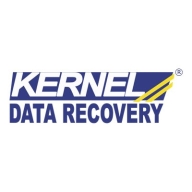

Microsoft DPM and Kernel for OST to PST Converter compete in data protection and email file conversion categories. Microsoft DPM has an advantage in support while Kernel for OST to PST Converter stands out with specialized features for specific needs.
Features: Microsoft DPM offers comprehensive data management across different infrastructures with robust backup and recovery capabilities. Kernel for OST to PST Converter specializes in precise email file conversion, seamless OST to PST file transition, and handling email recovery tasks effectively.
Ease of Deployment and Customer Service: Kernel for OST to PST Converter ensures a straightforward deployment with prompt technical support aimed at swift operation. Microsoft DPM requires more effort in deployment but compensates with extensive documentation and support channels.
Pricing and ROI: Microsoft DPM involves higher initial setup costs due to its extensive feature set and infrastructure integration, promising substantial long-term ROI for large-scale environments. Kernel for OST to PST Converter offers a more moderate pricing model, providing immediate returns through efficient conversion and simple deployment.

Kernel for OST to PST Converter is a comprehensive utility designed to facilitate seamless migration of OST files to PST format, ensuring smooth access to Outlook data in case of any inaccessibility issues.
This tool is crucial for users needing a reliable method to convert OST files into PST files effortlessly. It delivers strong capabilities in recovering and restoring data from damaged or corrupted OST files, allowing for efficient data management. The converter supports all versions of Outlook, ensuring usability across different environments and proving valuable in downtime reduction.
What are the key features of Kernel for OST to PST Converter?Kernel for OST to PST Converter is implemented across various sectors, including finance and healthcare, where data accessibility and integrity are critical. Such industries benefit immensely from the quick and reliable conversion capability, enhancing data recovery processes and ensuring consistent workflow without disruption.
Microsoft Data Protection Manager (DPM) is an enterprise backup system that can be used to back up data from a source location to a target secondary location. Microsoft DPM allows you to back up application data from Microsoft servers and workloads, and file data from servers and client computers. You can create full backups, incremental backups, differential backups, and bare-metal backups to completely restore a system. Microsoft DPM can store backup data to disks for short-term storage, to Azure Cloud for both for short-term and long-term storage off-premises, and to tapes for long-term storage, which can then be stored offsite. Backed up files are indexed, which allows you to easily search your recovered data.
Microsoft DPM contributes to your business continuity and disaster recovery strategy by facilitating the backup and recovery of enterprise data, ensuring resources are available and recoverable during planned and unplanned outages. When outages occur and source data is unavailable, you can use DPM to easily restore data to the original source or to an alternate location.
Key Features of Microsoft DPM:
Reviews from Real Users
Microsoft DPM stands out among its competitors for a number of reasons. Two major ones are its robust and flexible backup capabilities and its being easy to manage with one central dashboard.
William M., the head of ICT infrastructure & security at a tech services company, notes, "The automated procedure is quite good for us, as it is able to capture all of the information that we require. The compatibility is very good. We have an IBM AS/400 machine in our office that we're using, and we're able to back it up fine. This is the same for other systems, as well. I think that overall, it is really adaptable, compatible, and scalable."
Mohammed I., a managing director at Adalites, notes, "I would definitely recommend data protection DPM. It has an application backup, a file backup, a system backup and a hypervisor. It works flawlessly, never a problem."
Rodney C. a system analyst at a financial services firm, writes, "The most valuable feature is that DPM has an index so individual files can be searched. This is our primary tool for recovering deleted files or folders. Once we implement a System Center Operations Manager, all of our DPM servers can then be seen on one dashboard."
We monitor all Backup and Recovery reviews to prevent fraudulent reviews and keep review quality high. We do not post reviews by company employees or direct competitors. We validate each review for authenticity via cross-reference with LinkedIn, and personal follow-up with the reviewer when necessary.